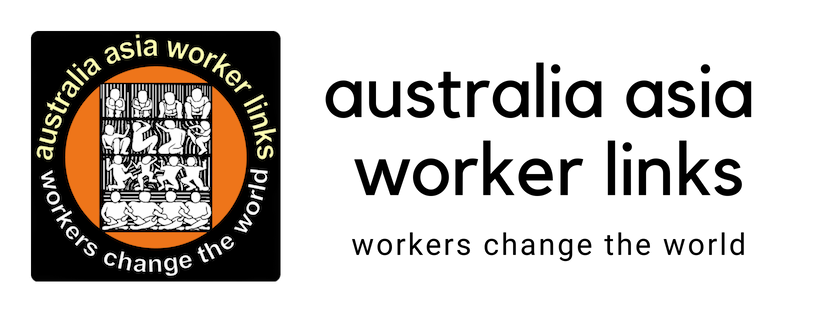Workers in the Asia Pacific region face many dangers at work.
Organising against unsafe conditions is a daily task.
In Australia and Japan there are sizeable Health & Safety centres and training activities. In other parts of the region, such as the Philippines and Thailand, Health & Safety Centres have been established, but they have fewer resources to deal with the very serious levels of workplace dangers
and resulting injuries and sickness.
In the rest of the region, the situation is even more dangerous to workers, with inadequate laws or enforcement and too little information. In every country workers who do not have secure employment or are without unions are most at risk. Workers are expected to pay for the development of industry with their health and their lives. Poverty forces workers to accept jobs that are unsafe. Little regard is given to child workers or to the needs of women workers.
Repression against complaints by workers often results in sacking. Sometime repression against workers extends to arrests, beatings, and even torture, rape and murder.
Work hazards range from overwork and long working hours to accidents and major workplace disasters. Dangerous machines, fires, explosions, cave-ins, chemicals and dusts kill workers in the Asia Pacific region every day. There is under reporting of accidents and fatalities everywhere.
Injuries and illnesses from work cause many workers to have many serious health problems or to shorten their life. They have to cope with the physical impact of long term problems as well as the social consequences of being injured or ill. Injured workers often lose the ability to earn a living and support their families. Medical assistance, compensation and rehabilitation are expensive or very difficult to access. Doctors who are aware of occupational medicine and supportive of workers are very rare.
Activists who struggle for workplace health & safety are aware of the uneven and difficult situation, and work to build international networks to share information.
Read more about networks:
Workers in the Asia Pacific region face many dangers at work.
Organising against unsafe conditions is a daily task.
In Australia and Japan there are sizeable Health & Safety centres and training activities. In other parts of the region, such as the Philippines and Thailand, Health & Safety Centres have been established, but they have fewer resources to deal with the very serious levels of workplace dangers
and resulting injuries and sickness.
In the rest of the region, the situation is even more dangerous to workers, with inadequate laws or enforcement and too little information. In every country workers who do not have secure employment or are without unions are most at risk. Workers are expected to pay for the development of industry with their health and their lives. Poverty forces workers to accept jobs that are unsafe. Little regard is given to child workers or to the needs of women workers.
Repression against complaints by workers often results in sacking. Sometime repression against workers extends to arrests, beatings, and even torture, rape and murder.
Work hazards range from overwork and long working hours to accidents and major workplace disasters. Dangerous machines, fires, explosions, cave-ins, chemicals and dusts kill workers in the Asia Pacific region every day. There is under reporting of accidents and fatalities everywhere.
Injuries and illnesses from work cause many workers to have many serious health problems or to shorten their life. They have to cope with the physical impact of long term problems as well as the social consequences of being injured or ill. Injured workers often lose the ability to earn a living and support their families. Medical assistance, compensation and rehabilitation are expensive or very difficult to access. Doctors who are aware of occupational medicine and supportive of workers are very rare.
Activists who struggle for workplace health & safety are aware of the uneven and difficult situation, and work to build international networks to share information.
Read more about networks:
